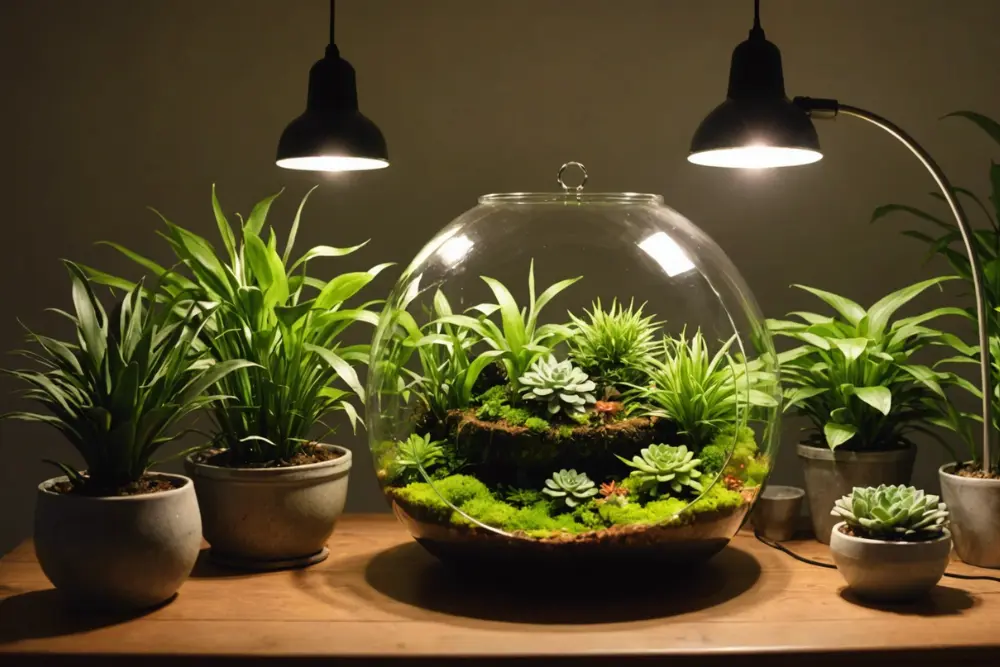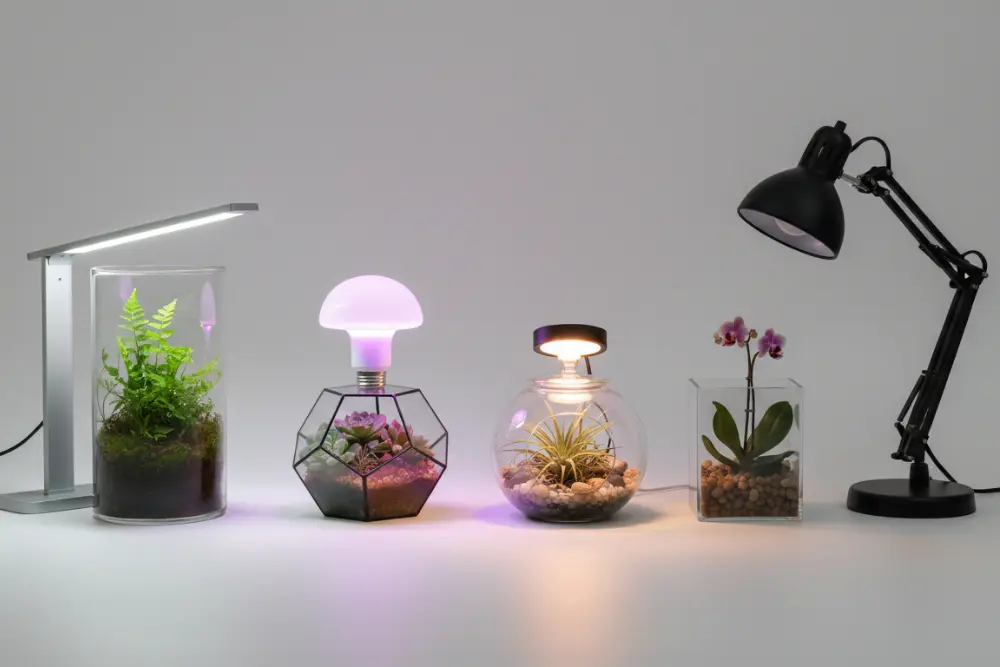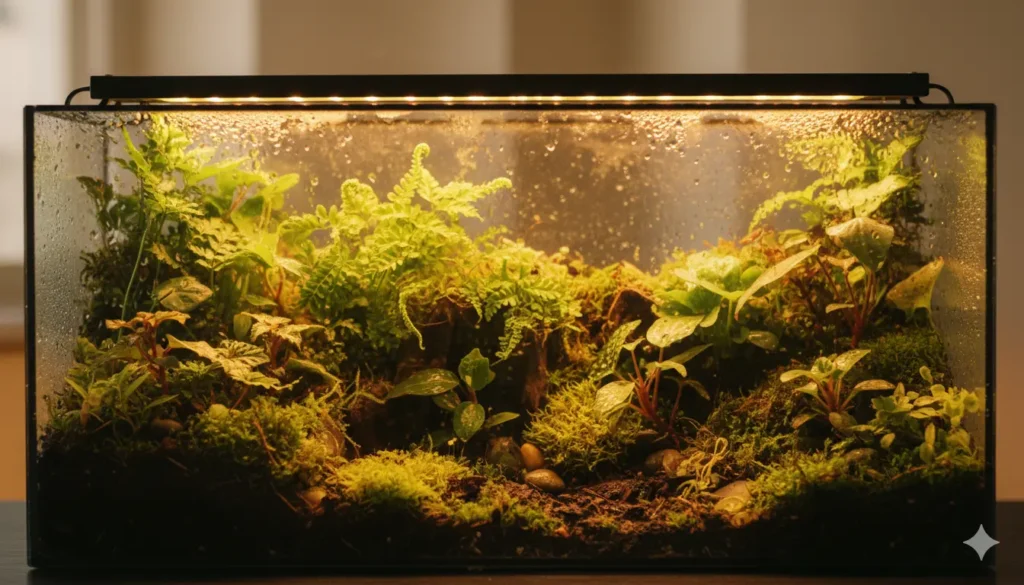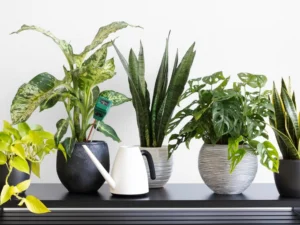A terrarium with lights creates a thriving micro-garden that grows consistently throughout the year. Although natural sunlight can help, artificial lighting offers the controlled environment plants depend on for stable growth. As a result, even beginners can maintain healthier terrariums with predictable conditions and fewer fluctuations.
However, choosing the right light, placing it correctly, and maintaining a safe daily cycle requires a bit of strategy. Therefore, this guide explains every essential step in a simple, practical way so you can confidently build a vibrant terrarium with lights that remains stable, balanced, and visually striking.
Why Lighting Matters in a Terrarium
Light fuels photosynthesis, controls color development, and shapes the overall growth pattern of terrarium plants. Additionally, lighting influences humidity levels, temperature stability, and how quickly plants expand inside the enclosure. When the right balance is achieved, plants stay compact, richly colored, and naturally healthy.

Although terrariums look effortless, the lighting setup determines whether moss stays lush, foliage remains sturdy, and miniature tropicals grow without stretching. Therefore, choosing proper lighting is one of the most important steps in maintaining a long-lasting terrarium ecosystem.
Choosing the Best Lights for a Terrarium
The best lights for terrarium setups mimic natural daylight while preventing overheating. Because terrariums hold moisture, the goal is to choose lighting that stays cool yet strong enough for consistent plant growth. Fortunately, modern LEDs make this easier and safer for beginners and enthusiasts alike.
Since plants respond to specific wavelengths, full-spectrum LEDs are the most reliable choice. They support natural color, steady development, and predictable hydration levels. With the right light in place, your terrarium becomes more resilient and requires less long-term maintenance.
Types of Terrarium Lighting: With Pros & Ideal Uses
Before choosing your terrarium with lights setup, it helps to understand which lighting styles perform best. Each type offers unique benefits depending on the enclosure and plant selection.

Lighting types for terrarium with Light:
-
Full-spectrum LED bars: Even coverage, low heat, ideal for closed and semi-closed terrariums.
-
LED grow lights: Higher PAR output for tropicals and moss that require brighter intensity.
-
LED puck lights: Great for small terrariums needing focused light without added heat.
-
Clip-on LED lamps: Adjustable angle and height, perfect for open terrariums or shelves.
These options provide safe, efficient, and long-lasting illumination without disrupting humidity or overheating delicate plants.
Open Terrarium with Light
Open terrarium lighting is easier to manage because airflow remains consistent and humidity stays low. As a result, plants can handle slightly brighter light without stress, making open setups ideal for succulents, air plants, and decorative foliage. Additionally, lights in these terrariums are less likely to trap heat, allowing better flexibility in brightness.
However, open terrariums still require controlled exposure because strong light can dry plants too quickly. Therefore, adjustable LED lamps or dimmable full-spectrum bars offer the safest, most balanced lighting for these displays.
Closed Terrarium with Light
Closed terrarium lighting must stay cooler because humidity levels rise quickly in sealed environments. Although these ecosystems stay lush on their own, the heat from intense lighting can cause condensation spikes or plant burn. Therefore, low-heat LEDs are the safest and most stable option.
With the right bulb, closed terrariums remain naturally humid without overheating or drying out moss and ferns. Additionally, consistent lighting helps plants stay compact and prevents stretching toward the glass, which often occurs with weak or inconsistent bulbs.
How Many Hours of Light a Terrarium Needs
Terrariums thrive when they follow a predictable daily cycle, often called a photoperiod. Although different plants have unique requirements, most terrariums perform best with steady, moderate exposure. Therefore, maintaining consistent light hours will support color, moisture balance, and overall structure.
Durations for Terrarium with lights:
-
Moss Terrariums: 6–8 hours
-
Closed Terrariums: 8–10 hours
-
Open Terrariums: 10–12 hours
-
Tropical Terrariums: 10–12 hours
Using an automatic timer ensures accuracy and prevents overexposure, which can lead to algae growth or overheated glass.
Setting Up a Terrarium With Lights: Step-by-Step Guide
Setting up a terrarium with lights requires balancing heat, distance, humidity, and brightness. Because each enclosure behaves differently, this method ensures predictable growth while preventing temperature spikes or drying. With the right setup, your terrarium becomes easier to maintain long-term.
Follow these essential steps:
-
Choose the terrarium type: Open, closed, or semi-closed designs interact with light differently and affect heat buildup.
-
Select a full-spectrum LED: These mimic daylight, stay cool, and offer safe PAR output.
-
Position the light correctly: Most setups work best with a 6–10 inch distance.
-
Set a photoperiod: Timers maintain rhythm, stress, and prevent excessive condensation.
-
Monitor weekly changes : Plants show early warning signs through color, shape, or texture.
Following this sequence ensures stable terrarium growth without constant troubleshooting.
Distance From Light to Plants
Maintaining the right distance protects your terrarium from burned leaves, temperature spikes, or stretched growth. Because each LED model differs in strength, starting with a middle distance and adjusting slowly offers the safest approach.
Additionally, plant response provides clear feedback on whether you need more or less intensity. If you’re also looking for ways to keep your indoor environment healthier overall, you might find it helpful to explore these effective plants that keep bugs away indoors.
If leaves turn pale, the light may be too far away, while dryness or warm glass indicates the opposite. Therefore, slow adjustments help maintain balance without stressing delicate species.
Humidity and Temperature of Terrarium with light
Artificial lighting subtly changes the internal climate of your terrarium. Although LEDs stay cool, they still warm the enclosure enough to influence condensation and hydration. Therefore, watching the terrarium’s microclimate helps prevent mold, algae, or plant dehydration.
If condensation becomes heavy, raise the light or shorten the photoperiod. However, if the terrarium feels too dry, lowering the light or increasing humidity will restore balance. Continuous small adjustments ensure your terrarium stays vibrant year-round.
Signs Your Lighting Setup Needs Adjustment
Plants communicate clearly through changes in posture, color, and growth pattern. Although minor variations are normal, strong shifts often indicate lighting issues. Fortunately, early signs are easy to correct with simple adjustments.
Stretching, pale leaves, or leaning toward the lamp show the need for more intensity. However, browning, dryness, or hot glass suggest the opposite. Because terrariums react quickly to lighting, weekly observation keeps the environment stable and healthy.
Conclusion on Terrarium with Lights
A terrarium with lights becomes a dependable, beautifully balanced ecosystem when the right setup is in place. Although natural sunlight helps, artificial lighting provides consistency, structure, and predictable growth that plants rely on. With careful placement, proper timing, and steady monitoring, your terrarium stays vibrant and visually rich all year.
By choosing smart lighting, adjusting distances, and watching plant response, you create a thriving environment with minimal maintenance. Consequently, your terrarium becomes a long-lasting miniature garden that feels effortless yet incredibly rewarding. For additional guidance on managing indoor greenery, you can also explore how to care for the tractor seat plant indoors, which offers helpful insights into creating stable indoor plant conditions.
FAQs
Do all terrariums need artificial lighting?
Not always, but most indoor terrariums benefit from reliable artificial lighting because natural light is inconsistent, especially in shaded homes.
Are LED lights safe for closed terrariums?
Yes, as long as they produce low heat. Full-spectrum LEDs are the safest option because they protect humidity levels and prevent overheating.
Can I leave terrarium lights on all day?
No. Excessive lighting causes algae growth and heat spikes. Instead, use a timer to maintain a regular 6–12 hour schedule depending on the terrarium type.
How far should LED lights be from terrarium plants?
Most terrariums thrive with a 6–10 inch distance, although stronger grow lights may require additional height to avoid overheating.
Why are my terrarium plants stretching toward the light?
This usually means the light is too weak or too far away. Increasing intensity or lowering the lamp solves the issue quickly.


















